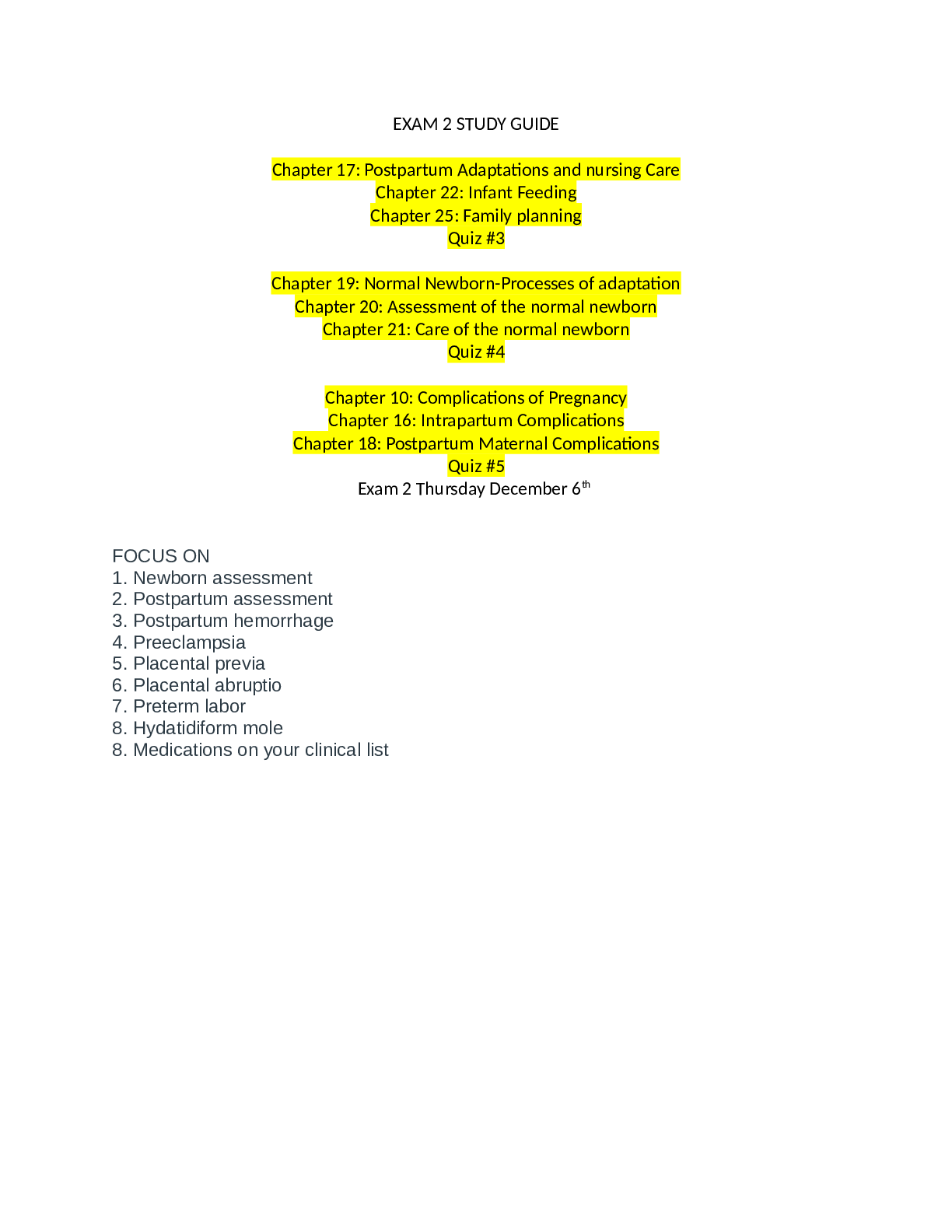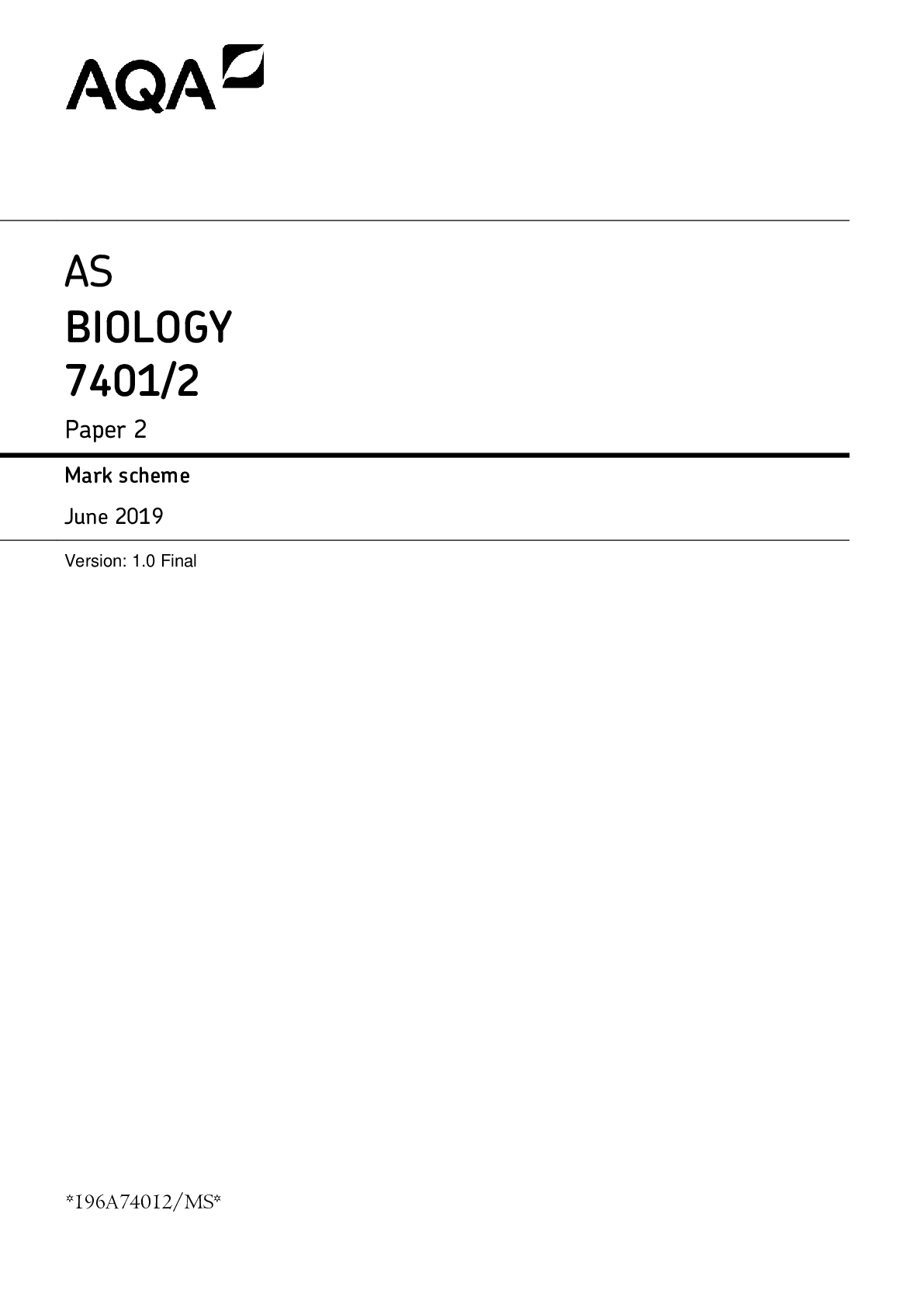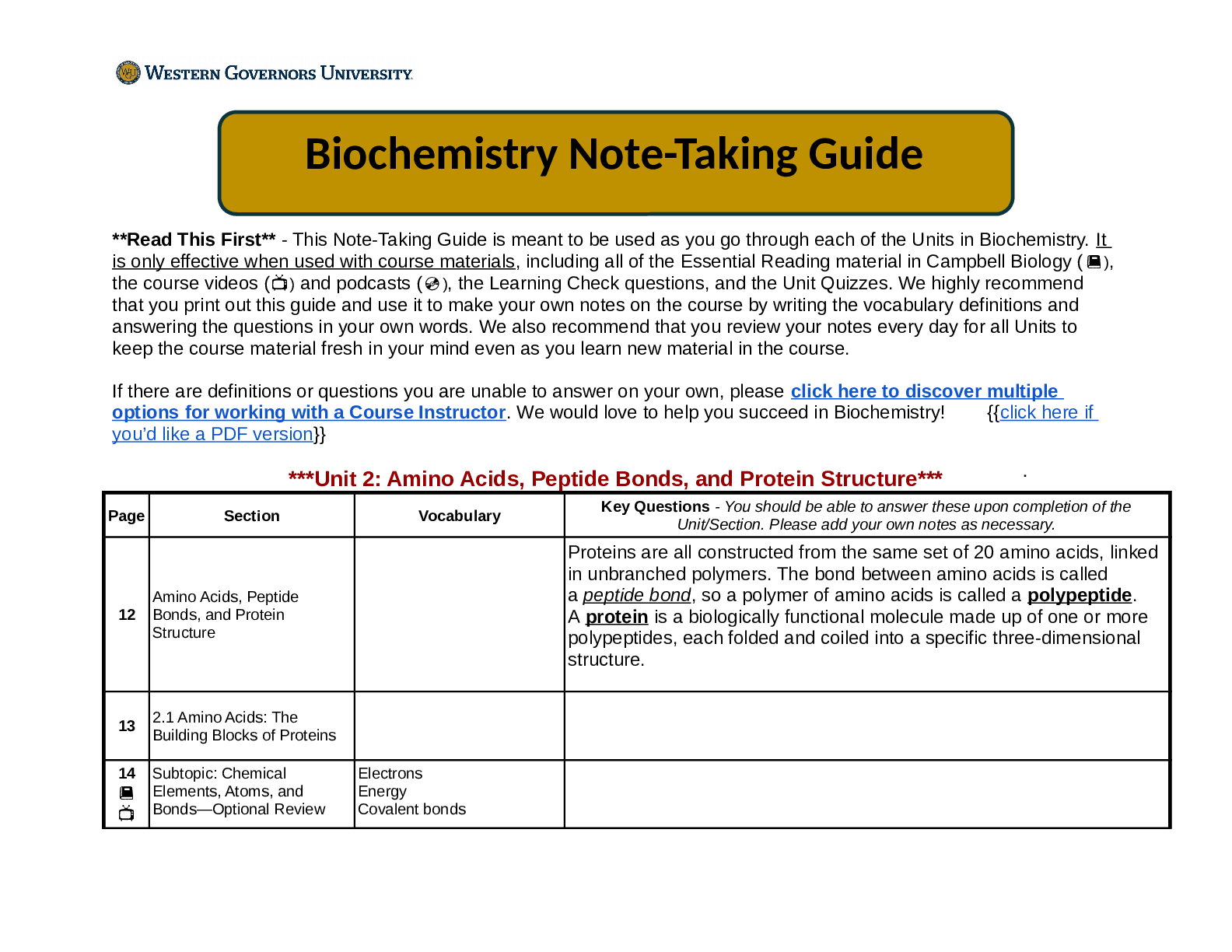*NURSING > Solutions Guide > NR 327EXAM 2 OB MATERNAL NR 327-Miriana 100% verified (All)
NR 327EXAM 2 OB MATERNAL NR 327-Miriana 100% verified
Document Content and Description Below
EXAM 2 STUDY GUIDE Chapter 17: Postpartum Adaptations and nursing Care Chapter 22: Infant Feeding Chapter 25: Family planning Quiz #3 Chapter 19: Normal Newborn-Processes of adaptation Chapter 2... 0: Assessment of the normal newborn Chapter 21: Care of the normal newborn Quiz #4 Chapter 10: Complications of Pregnancy Chapter 16: Intrapartum Complications Chapter 18: Postpartum Maternal Complications Quiz #5 Exam 2 Thursday December 6th FOCUS ON 1. Newborn assessment 2. Postpartum assessment 3. Postpartum hemorrhage 4. Preeclampsia 5. Placental previa 6. Placental abruptio 7. Preterm labor 8. Hydatidiform mole 8. Medications on your clinical list Chapter 17: Postpartum Adaptations and nursing Care Chapter 22: Infant Feeding Chapter 25: Family planning Quiz #3 • 4th stage of labor/Postpartum period/Puerperium • First 6 weeks after birth of infant o -Return of reproductive organs to normal nonpregnant state • Physiological maternal changes o Uterine involution § Starts right after delivery of placenta § Changes of reproductive organs, particularly the uterus that returns to non-pregnant size and condition • Involves three processes o 1. Contraction of muscle fibers o 2. Catabolism: the process of converting cells into simpler compounds o 3. Regeneration of the uterine epithelium Sub-involution: when uterus does not return to non-pregnant state, o lochia flow, cervical involution, o Decrease in vaginal distention o alteration in ovarian function and menstruation o Cardiovascular, urinary tract, breast and GI tract changes Afterpains: intermittent uterine contractions, source of discomfort for many women, the discomfort is more acute for multiparas because repeated stretching of muscle fibers leads to muscle tone loss that causes repeated contraction and relaxation of the uterus. • Greatest risks during postpartum period: hemorrhage, shock, and infection. • Oxytocin o Administer postpartum to improve the quality of uterine contractions. A firm and contracted uterus prevents excessive bleeding and hemorrhage • After delivery of the placenta, hormones decrease resulting in decreased blood glucose, estrogen and progesterone o Decreased estrogen causes breast engorgement, diaphoresis, and diuresis o Decreased vaginal lubrication Assessment • Monitor vital signs, uterine firmness and its location in relation to the umbilicus, uterine position in relation to the midline of the abdomen, and amount of vaginal bleeding • BP and pulse assessed every 15 mins for the first 2 hours after birth • Temperature every 4 hours for first 8 hours after birth and then at least every 8 hours Postpartum Assessment • Breasts • Uterus (fundal height, uterine placement, and consistency • Bowel and GI function • Bladder function • Lochia (color, odor, consistency, and amount (COCA)) • Episiotomy (edema, ecchymosis, approximation) Vital signs to include pain assessment and teaching needs RH Negative mothers • Rho(D) immune globulin is administered within 72 hours to women who are Rhnegative and gave birth to infants who are Rh-positive to prevent sensitization in future pregnancies. Kleihauer-betke test • Determines amount of fetal blood in maternal circulation if large fetomaternal transfusion suspected. If 15 ml or more of fetal blood detected, mom can get increased Rho(D) immune dose Thermoregulation • Postpartum chill occurs in first 2 hours puerperium o Uncontrollable shaking chill following birth o Nervous system response, vasomotor changes, a shift in fluids, and/or work of labor o Normal unless along with elevated temperature Interventions: Provide warm blankets and fluids Assure client that chills are self-limiting Fundus Physical changes include involution of the uterus Uterus decreases in size from 1 kg to 60 to 80 g at 6 weeks with fundal height into pelvis at one fingerbreadth per day • At end of 3rd stage of labor, uterus palpable at midline and 2 cm below to halfway between umbilicus and symphysis pubis. • 1 hr after, fundus rise to level of umbilicus • Every 24 hour, fundus should descend 1-2 cm. halfway between the symphysis pubis and umbilicus by 6th postpartum day • After 2 weeks, uterus should lie within true pelvis and should not be palpable Assessment Assess fundal height, uterine placement, and uterine consistency at least every 8 Hr after recovery period ended Cup one hand just above symphysis pubis to support lower segment of uterus and palpate abdomen to locate fundus with other hand Document fundal height Midline or displaced If displaced, due to full bladder Firm or boggy (not firm) If boggy, lightly massage the fundus in a circular motion Patient-Centered Care • Administer oxytocics (oxytocin, methylergonovine and carboprost) IM or IV after placenta to promote uterine contractions and to prevent hemorrhage • Encourage emptying of bladder every 2 to 3 hours to prevent possible uterine displacement and atony Lochia Post-birth uterine discharge that contains blood, mucus, and uterine tissue Rubra: bright red color, dark red or brown color, blood consistency, fleshy odor, can contain small clots, transient flow increases during breastfeeding and upon rising, lasts 1-3 days after delivery Serosa: pinkish brown color and serosanguinous consistency. Lasts from day 4 to day 10 after delivery Alba: yellowish white creamy color, fleshy odor, lasts from day 11 up to 4 to 8 weeks Postpartum Rub for 3 days, sir has six alibis and o [Show More]
Last updated: 2 years ago
Preview 1 out of 67 pages

Buy this document to get the full access instantly
Instant Download Access after purchase
Buy NowInstant download
We Accept:

Reviews( 0 )
$11.00
Can't find what you want? Try our AI powered Search
Document information
Connected school, study & course
About the document
Uploaded On
Jun 01, 2021
Number of pages
67
Written in
Additional information
This document has been written for:
Uploaded
Jun 01, 2021
Downloads
0
Views
99



.png)
.png)
.png)



.png)


